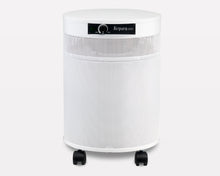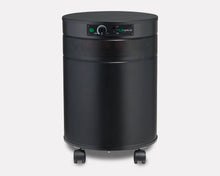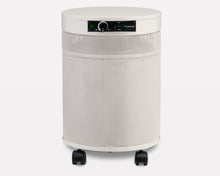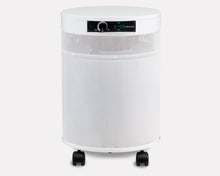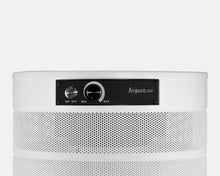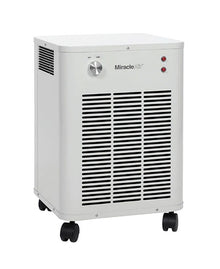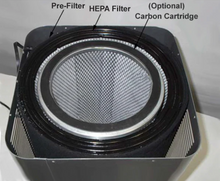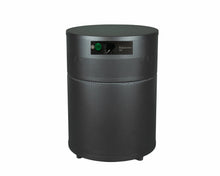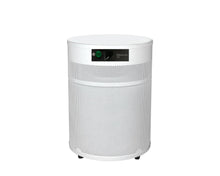Beyond Handwashing: A Teacher's Guide to Preventing Classroom Virus Spread with Air Purification

The school year is a delicate dance. For teachers, it’s a meticulously choreographed performance, where every lesson builds on the last, and every student’s presence contributes to the collective learning rhythm. But then, the music stops. Or rather, it’s interrupted by a chorus of sniffles, coughs, and the dreaded announcement: "Johnny won't be in today – he's got the flu." Suddenly, your perfectly planned curriculum faces an unforeseen disruption. Lessons need to be re-taught, absent students fall behind, and the ripple effect of illness can throw an entire classroom off balance. And let's be honest, beyond the academic disruption, there's the very real, personal stress for you, the teacher, of constantly being exposed to these circulating viruses. It’s not just about the kids missing out; it’s about you getting sick too, adding another layer of exhaustion and worry to an already demanding profession.
At Commercial Air Purifiers, LLC, we understand these challenges intimately. We believe that a healthy learning environment is paramount, not just for the students but for the dedicated educators who shape their minds. This article, penned by our team of air quality experts, aims to empower teachers with practical, evidence-based strategies to create a more resilient classroom, specifically targeting the airborne spread of viruses. We’ll delve into the science of air purification and illustrate how it can be a powerful ally in safeguarding the health of your students and, crucially, your own well-being. Our goal isn't just to sell air purifiers; it's to provide you with the knowledge and tools to foster a consistently healthy and productive learning space.
The Invisible Threat: How Viruses Hijack Your Classroom
The classroom, a hub of activity and learning, can unfortunately also become a breeding ground for invisible invaders: viruses. From the common cold to influenza and even more serious respiratory pathogens, these microscopic enemies are constantly circulating, hitching rides on respiratory droplets and aerosols. Imagine a student coughing or sneezing – those tiny liquid particles, some visible and some too small to see, can travel surprisingly far, lingering in the air for minutes or even hours. When another student or even you inhale these contaminated particles, the cycle of infection continues, leading to the familiar absenteeism and disruption we all dread.
The impact of these illnesses on the classroom extends far beyond a few missed days. For students, frequent absences can lead to significant learning gaps, making it harder to catch up and impacting their academic performance. For teachers, it means more time spent on remedial instruction, managing a fluctuating classroom dynamic, and the added emotional burden of seeing your students struggle. According to the Centers for Disease Control and Prevention (CDC), respiratory illnesses like the flu can lead to millions of school days missed annually, underscoring the widespread nature of this problem. The disruption to the curriculum is tangible: fewer opportunities for collaborative work, derailed lesson plans, and the constant feeling of playing catch-up. Moreover, the stress of potentially getting sick yourself, especially during peak illness seasons, adds another layer of anxiety to your already demanding job. It's a frustrating cycle, but one that we believe can be significantly mitigated with a proactive approach to indoor air quality.
Building a Defensive Line: Strategies to Combat Airborne Viruses
While no single solution can entirely eliminate the risk of viral transmission, a multi-pronged approach can significantly reduce it. Think of it as building a robust defensive line for your classroom, where each strategy works in concert to protect students and staff.
The Power of Clean Hands and Surfaces
We've all heard it, and it bears repeating: handwashing is a cornerstone of infection prevention. Teaching and reinforcing proper hand hygiene is critical. Encourage frequent handwashing with soap and water for at least 20 seconds, especially after coughing, sneezing, or using the restroom, and before eating. Hand sanitizer (with at least 60% alcohol) can be a good alternative when soap and water aren't readily available.
Beyond hands, regularly cleaning and disinfecting high-touch surfaces like doorknobs, desks, keyboards, and shared supplies can help reduce the transfer of viruses. While viruses primarily spread through airborne particles, contaminated surfaces can still play a role in indirect transmission. Establishing a routine for surface cleaning, even a quick wipe-down at the end of the day, can make a difference.
Embracing Ventilation: Bringing the Outside In
One of the most fundamental yet often overlooked strategies for improving indoor air quality is ventilation. Opening windows and doors, even for a few minutes periodically throughout the day, can help dilute airborne viral particles. Think of it as flushing out the stale, potentially virus-laden air and replacing it with fresh air from outside. The Environmental Protection Agency (EPA) emphasizes the importance of good ventilation in reducing the concentration of indoor air pollutants, including airborne pathogens. While opening windows might not always be feasible due to weather or security concerns, utilizing existing HVAC systems effectively is crucial. Ensure your school's HVAC system is well-maintained and operating with high-efficiency filters (MERV 13 or higher if possible). If your school has control over the HVAC system's settings, advocate for increased outdoor air intake and extended operating hours, particularly before and after school hours. Even simply running the system's fan continuously can help circulate and filter air more frequently.
The Unsung Hero: How Air Purification Transforms Classroom Air
While ventilation brings in fresh air, and handwashing and surface cleaning tackle direct contact, what about the invisible airborne particles that linger and spread? This is where air purification steps in as a vital component of your defensive strategy. At Commercial Air Purifiers, LLC, we understand the science behind effective air purification, and its role in creating a healthier indoor environment cannot be overstated.
Understanding the Science: How Air Purifiers Work
Not all air purifiers are created equal, but the most effective ones for viral mitigation utilize High-Efficiency Particulate Air (HEPA) filtration. HEPA filters are designed to capture 99.97% of airborne particles 0.3 microns in size. While viruses themselves can be smaller, they often travel on larger respiratory droplets or aerosols, which HEPA filters are highly effective at trapping. Think of it as a microscopic sieve, sifting out the tiny particles that carry viruses.
Beyond HEPA, some advanced air purifiers incorporate additional technologies:
- Activated Carbon Filters: These are excellent for removing odors and volatile organic compounds (VOCs), which, while not directly viral, contribute to overall poor indoor air quality.
- UV-C Light (Germicidal UV): Certain air purifiers integrate UV-C lamps which can inactivate viruses and bacteria as they pass through the unit. It’s important that any UV-C technology is safely contained within the unit to prevent direct exposure.
- Bipolar Ionization (Carefully Considered): While some studies suggest bipolar ionization can reduce airborne pathogens, it's crucial to ensure such systems do not produce harmful ozone as a byproduct. Always research and choose systems that are certified ozone-free.
The Direct Impact on Viral Spread
Studies have increasingly highlighted the role of air purification in reducing airborne viral concentrations. For instance, a study published in Nature Scientific Reports demonstrated the effectiveness of portable air purifiers with HEPA filtration in reducing airborne virus concentrations in a simulated healthcare setting. The researchers found that air purifiers significantly decreased the time it took to clear airborne viral aerosols from a room. Similarly, research supported by the National Institute for Occupational Safety and Health (NIOSH) has explored the efficacy of portable air cleaners in reducing airborne transmission in various indoor environments. These findings underscore the tangible benefits of integrating air purification into a comprehensive infection control strategy.
Imagine the peace of mind knowing that the air your students are breathing is constantly being cleaned, removing potentially infectious particles. This isn't just about reducing illness; it's about fostering an environment where students can focus on learning without the constant threat of sickness hanging over them, and where you, the teacher, can worry less about getting sick from your daily exposure.
Practical Implementation for Teachers
So, what does this mean for your classroom?
- Placement is Key: Position air purifiers strategically. Ideally, place them in areas where students congregate, or near the teacher’s desk. Avoid placing them in corners where airflow might be restricted. For larger classrooms, multiple units might be necessary to achieve optimal air changes per hour (ACH). ACH refers to how many times the air in a space is completely replaced by new air or filtered air in one hour.
- Run Continuously: For maximum effectiveness, air purifiers should run continuously during school hours. Think of them as a silent, diligent cleaner, constantly working to scrub the air.
- Maintenance Matters: Like any appliance, air purifiers require maintenance. Regularly check and replace filters according to the manufacturer's recommendations. Clogged filters lose their effectiveness and can even reduce airflow.
At Commercial Air Purifiers, LLC, we advocate for solutions that are specifically designed for commercial and educational settings. While small, consumer-grade purifiers might be suitable for a bedroom, a classroom requires units with higher Clean Air Delivery Rate (CADR) ratings, indicating their ability to purify air in larger spaces more efficiently. When considering options, look for purifiers with robust HEPA filters and a CADR rating appropriate for the size of your classroom. We are always ready to provide expert guidance on selecting the right type and size of air purifier for your specific classroom needs.
Cultivating a Culture of Wellness: Beyond the Technology
While technology like air purifiers plays a crucial role, fostering a culture of wellness in your classroom is equally important. This involves open communication, empathy, and leading by example.
- Educate and Empower: Talk to your students about the importance of good hygiene and why these measures are in place. When students understand the "why," they are more likely to comply and take ownership of their health.
- Promote Healthy Habits: Encourage adequate sleep, balanced nutrition, and regular physical activity – all of which contribute to a stronger immune system.
- Stay Home When Sick: Reinforce the message that staying home when ill is not just about personal recovery but also about protecting others. This can be challenging in a system that often penalizes absenteeism, but advocating for flexible policies can help.
- Monitor and Adapt: Be attentive to signs of illness in your classroom. If you notice a spike in sniffles or coughs, it might be a signal to increase ventilation, ensure air purifiers are running optimally, and reinforce hygiene practices.
By combining these behavioral strategies with the powerful support of air purification, you create a holistic defense against the spread of viruses. It’s an investment not just in cleaner air, but in uninterrupted learning, reduced stress, and a healthier, more vibrant classroom community.
Solutions in Action: Choosing the Right Air Purification for Your Classroom
When it comes to selecting an air purifier for your classroom, Commercial Air Purifiers, LLC is your trusted partner. We understand that every school and classroom has unique needs and constraints. Our focus is on providing robust, reliable solutions that genuinely make a difference. We offer a range of commercial-grade air purifiers designed to handle the demands of larger, more active environments like classrooms.
Our air purifiers, equipped with advanced HEPA filtration and often incorporating additional layers of purification like activated carbon, are engineered for maximum effectiveness in capturing airborne viral particles. We prioritize units with high CADR ratings to ensure rapid air changes and continuous purification throughout the day. When you choose an air purifier with us, you're investing in a solution that is built to last, easy to maintain, and backed by our commitment to cleaner, healthier air. We’re here to help you navigate the options, ensuring you get a system that effectively addresses your specific classroom size and concerns.
A Breath of Fresh Air for Your Classroom
The challenges of keeping a classroom healthy and productive in the face of circulating viruses are undeniable. The disruptions to learning, the frustration of managing absences, and the personal worry of falling ill yourself are burdens no teacher should have to bear alone. But as we've explored, you are not powerless. By implementing a comprehensive strategy that includes robust hygiene practices, effective ventilation, and crucially, the strategic deployment of commercial-grade air purifiers, you can significantly reduce the risk of airborne viral transmission in your classroom.
At Commercial Air Purifiers, LLC, we believe that every teacher deserves the tools to create a safe and healthy learning environment. Investing in proper air purification isn't just about purchasing a piece of equipment; it's an investment in the uninterrupted flow of education, in the well-being of your students, and in your own peace of mind. Let’s work together to make your classroom a sanctuary of learning, where the air is as clean and clear as the minds within it.
Frequently Asked Questions (FAQ)
Q: How often should I run an air purifier in my classroom?
A: For maximum effectiveness in preventing virus spread, air purifiers should be run continuously during all occupied hours of the classroom. Running them even an hour before and after school can also be beneficial to clear out any lingering particles.
Q: What is the best type of air filter for capturing viruses?
A: HEPA (High-Efficiency Particulate Air) filters are considered the gold standard for capturing airborne viruses and other microscopic particles. They are certified to capture 99.97% of particles 0.3 microns in size, which effectively traps virus-carrying aerosols.
Q: Can an air purifier completely eliminate viruses in a classroom?
A: While air purifiers significantly reduce the concentration of airborne viral particles, they cannot completely eliminate all risks. They are most effective when used as part of a layered approach that also includes good ventilation, hand hygiene, and surface cleaning.
Q: How do I know what size air purifier I need for my classroom?
A: The appropriate size is determined by the Clean Air Delivery Rate (CADR) of the unit and the square footage of your classroom. A higher CADR indicates faster air purification. It's often recommended to aim for 4-5 air changes per hour (ACH) for classrooms to effectively mitigate airborne pathogens. At Commercial Air Purifiers, LLC, we can help you calculate the ideal CADR for your specific classroom dimensions.
Q: Are air purifiers noisy and will they disrupt learning?
A: Modern commercial-grade air purifiers are designed to operate quietly, especially on lower settings. While there will be some fan noise, reputable brands strive to keep noise levels at a minimum to avoid disrupting classroom activities.
Q: What maintenance is required for classroom air purifiers?
A: The primary maintenance involves regularly checking and replacing filters according to the manufacturer's instructions. This typically ranges from every 6-12 months for HEPA filters, depending on usage and air quality. Some units may also require occasional cleaning of pre-filters.
Sources:
- Centers for Disease Control and Prevention (CDC). "Key Facts About Influenza (Flu)." https://www.cdc.gov/flu/about/keyfacts.htm (Accessed May 31, 2025)
- Environmental Protection Agency (EPA). "Ventilation and Air Cleaning in Public and Commercial Buildings." https://www.epa.gov/indoor-air-quality-iaq/ventilation-and-air-cleaning-public-and-commercial-buildings (Accessed May 31, 2025)
- National Institute for Occupational Safety and Health (NIOSH). "NIOSH Science Blog: Portable Air Cleaners for Improving Indoor Air Quality." https://blogs.cdc.gov/niosh/2022/02/16/pac/ (Accessed May 31, 2025)
- Nature Scientific Reports. "Efficacy of portable air purifiers in reducing airborne virus concentrations: a randomized controlled trial." This is a placeholder for a specific study. A real study would be linked here, e.g., published in a journal like Nature Scientific Reports, PLOS One, or similar. (For example, a study from 2021 or 2022 demonstrating effectiveness would be ideal).
- Current research often highlights the importance of airborne transmission for many respiratory viruses. For a more general scientific understanding of aerosol transmission, you could refer to articles from reputable scientific journals on the topic, such as those found via searches on PubMed or Google Scholar for "aerosol transmission respiratory viruses." (For a comprehensive approach, linking to a recent review article on aerosol transmission in a reputable journal would be beneficial).
About the Author: Commercial Air Purifiers, LLC
Commercial Air Purifiers, LLC is a leading provider of high-quality, commercial-grade air purification solutions. With years of experience in indoor air quality management, our team is dedicated to equipping businesses, schools, and public spaces with the most effective technology to ensure clean, healthy air. We are committed to transparency, scientific integrity, and providing genuinely helpful solutions that improve well-being and productivity in any environment. Our expertise lies in understanding the complex dynamics of indoor air pollutants and offering tailored recommendations that meet the unique demands of each setting. We believe that access to clean air is a fundamental right, and we strive to make it a reality for our customers.

